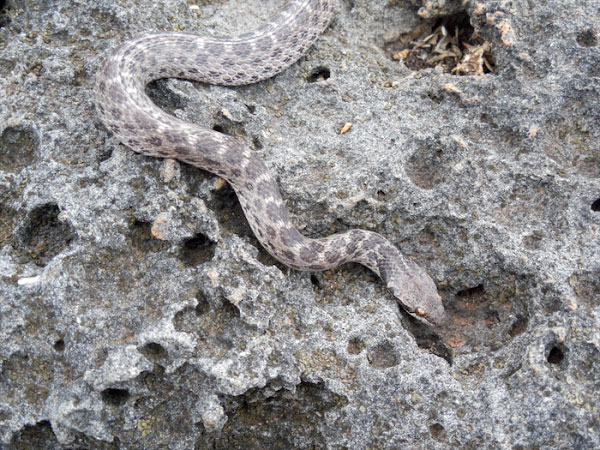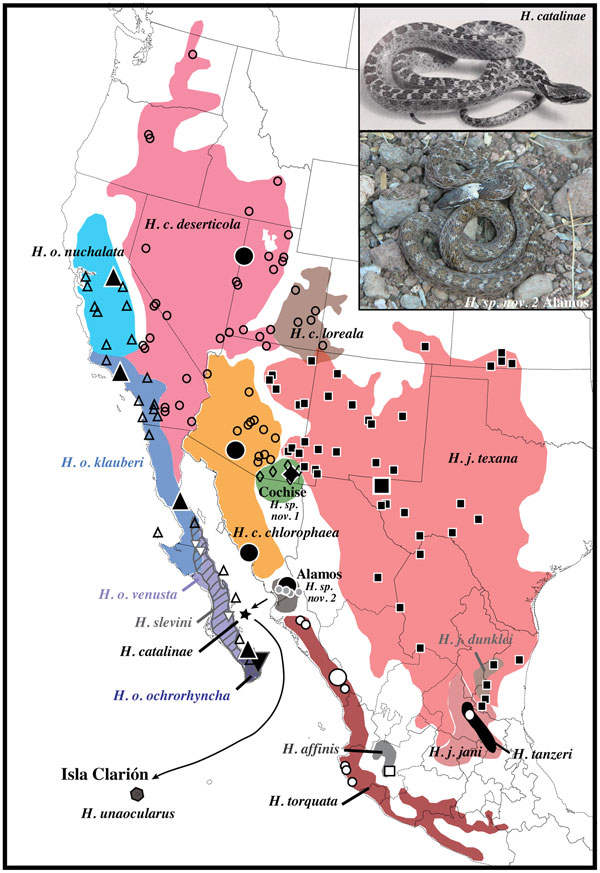Hypsiglena unaocualrus has not been seen since it was first discovered in 1936.
The Clarion Nightsnake (Hypsiglena unaocualrus), a mildly venomous, nocturnal snake first discovered in 1936 and not seen again in 80 years has been rediscovered by a Smithsonian Institute herpetologist and a species expert of Mexico's Revillagigedo Islands.

Photo Credit: Daniel G. Mulcahy
The Clarion Nightsnake was initially struck from the scientific record until it was rediscovered by scientists in 2013.
The research team, led by the Smithsonian's Daniel G. Mulcahy set out on an expedition to Mexico's Clarion Island to find the snake and in their nearly three weeks on the island, they were able to locate 11 snakes that matched the description that was made in 1936 by naturalist William Bebee.
"The rediscovery of the Clarion Nightsnake is an incredible story of how scientists rely on historical data and museum collections to solve modern-day mysteries about biodiversity in the world we live in," Mulcahy said in press statement released by the Smithsonian Institute. "Proper identification is the first step toward conserving this snake, and we plan to continue monitoring this species to learn more about the role it plays in the delicate Clarion Island ecosystem."

Photo Credit: Daniel G. Mulcahy
Hypsiglena distribution throughout western United States and Mexico. H, unaocualrus is shown with arrow.
The snake was never declared extinct but was struck from the scientific record after researchers failed to find any traces of the snake in the decades that followed the initial discovery.
Prior to the rediscovery of the Clarion Nightsnake, it was thought that there were just three reptile species on the Revilla islands, the lizards Urosaurus auriculatus on Socorro Island and U. clarionensis on Clarion Island, and an endemic snake, Masticophis anthonyi, also on Clarion Island. The rediscovery of Hypsiglena unaocualrus brings to four the number of known reptiles that are native to the Revillas.
The Clarion Nightsnake grows to about 18 inches in length and is nocturnal. It is brownish in coloration and features dark spots on its neck and back that help to camouflage it in the rock formations in which it lives. Mulcahy said in his paper published in the PLOS One Journal that although no stomach contents were observed by the team, they speculate that lizards may make up a large part of the snake's diet due to the fact that mainland lizards of the genus Hypsiglena dine on lizards. They also speculate that the unusually large sized crickets on the islands may also serve as a food source.
The full paper can be found on the PLOS One Journal website here. Authors include Daniel Mulcahy, Juan E. Martínez-Gómez, Gustavo Aguirre-León, Juan A. Cervantes-Pasqualli, George R. Zug.
Read More
Herping California's Channel Islands
Hula Painted Frog, Declared Extinct In 1996, Rediscovered
Indian Gecko Long Thought Extinct Rediscovered


